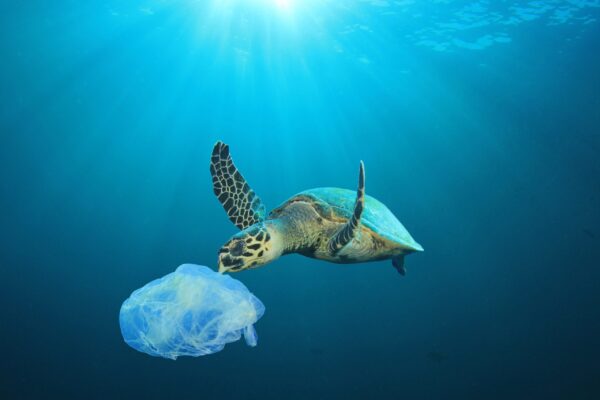In the blink of an eye, plastic has become an integral part of our daily lives, revolutionizing industries and transforming the way we live and consume. From packaging to technology, it’s hard to imagine a world without this versatile material. However, the exponential rise in plastic production and consumption has led to a grave environmental crisis – the world is drowning in plastic, and its insidious partner, microplastics. This article delves deeper into the journey of plastic from its birth to its devastating impact on oceanic ecosystems, supported by an array of data and facts.
The Birth of Plastic: A Blessing Turned Curse
Plastic, initially hailed as a revolutionary invention, was introduced as a solution to conserve natural resources and reduce reliance on materials like ivory and tortoiseshell. However, the cheap and durable nature of plastic led to its rampant production, with over 380 million tons being produced annually by the early 21st century, according to the Plastic Waste Management Institute. This explosion in plastic manufacturing has been fueled by industries such as packaging, textiles, and construction.
As plastic production soared, so did its improper disposal. Inadequate waste management systems and the convenience-driven “throwaway culture” have resulted in massive amounts of plastic waste finding its way into rivers, landfills, and ultimately, the oceans. The World Economic Forum estimates that by 2050, there could be more plastic in the oceans than fish, if current consumption and waste management trends continue.
The Perilous Journey to the Ocean

Plastic’s journey from land to ocean is facilitated by several factors, including wind, rain, and inadequate waste management. Rivers act as primary conduits, carrying plastic debris from urban and rural areas into the sea. A 2017 study led by Dr. Christian Schmidt estimated that rivers transport between 1.15 and 2.41 million metric tons of plastic into the oceans annually. This staggering figure highlights the urgency of addressing plastic and microplastics waste at its source and implementing effective waste management practices.
Microplastics: The Invisible Threat

While plastic waste is a visible menace, microplastics pose an even more insidious threat. These tiny particles, often invisible to the naked eye, result from the fragmentation of larger plastic items or are intentionally manufactured for personal care products. A study published in the journal “Science” estimated that there are more than 5 trillion plastic particles, weighing over 250,000 tons, floating on the ocean’s surface.
Once in the ocean, sunlight, waves, and physical abrasion further break down plastic debris into smaller and smaller pieces, eventually forming microplastics. These minuscule particles are ingested by marine organisms at the base of the food chain, gradually accumulating as they move up through the ecosystem. The United Nations Environment Programme (UNEP) warns that over 800 species, including fish, whales, and seabirds, are impacted by microplastics ingestion and entanglement, threatening their survival and biodiversity.
The Ecological Devastation Unleashed
The impact of plastic and microplastics on marine ecosystems is catastrophic. Marine animals mistake plastic debris for food, leading to ingestion and suffocation. For instance, sea turtles often mistake plastic bags for jellyfish, a staple in their diet, with tragic consequences. A study published in the journal “Nature” estimated that plastic ingestion has been documented in over half of all sea turtles globally.

Furthermore, microplastics have infiltrated every corner of the oceans, including remote Arctic waters. These particles act as magnets for harmful chemicals like PCBs and pesticides, which are then absorbed by marine organisms. As these toxins travel up the food chain, they can pose a risk to human health when consumed through seafood consumption. The International Union for Conservation of Nature (IUCN) underscores that plastics and associated chemicals are impacting the reproductive and developmental health of marine life, with potential implications for ecosystem stability.
A Call to Action
The world is at a critical juncture, facing the dire consequences of unchecked microplastics production and consumption. Urgent action is needed to mitigate the plastic crisis and reverse its damaging effects on our oceans and ecosystems. Governments, industries, and individuals must work collectively to reduce plastic production, improve waste management, and promote sustainable alternatives.
It is imperative to raise awareness about the gravity of the situation and foster a global commitment to curb plastic usage. By embracing a circular economy, investing in innovative recycling technologies, and advocating for policy changes, we can pave the way towards a cleaner and healthier planet for present and future generations.
Let’s join hands to turn the tide on plastic pollution and ensure that our oceans no longer bear the burden of our unsustainable habits. The time to act is now, before our world is consumed by the very material that was once heralded as a boon to humanity. Together, we can make a lasting impact and create a brighter, plastic-free future.

